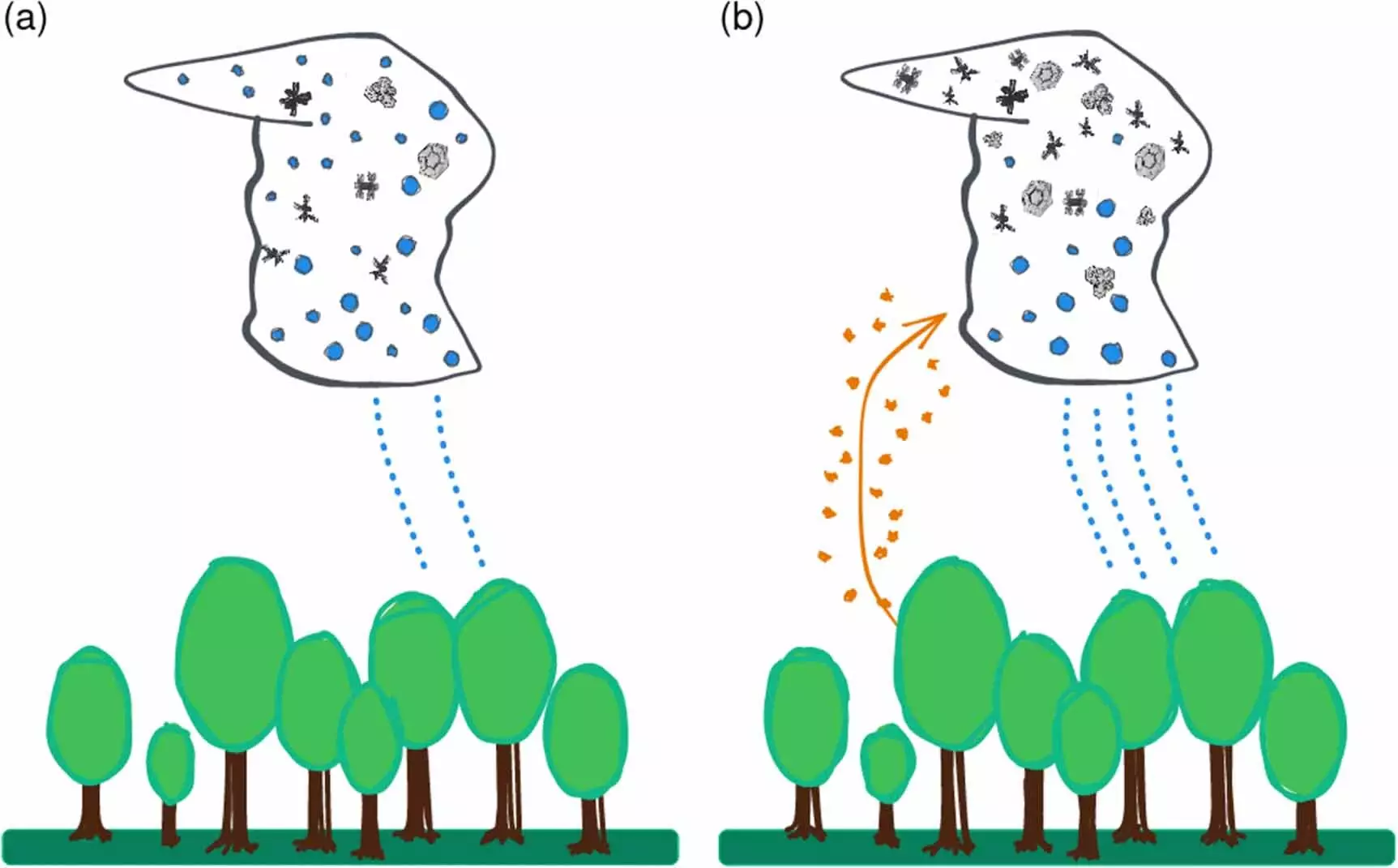The interaction between nature and climate has long been a subject of scientific inquiry, yet recent research has unveiled an unexpected component of this intricate relationship: pollen. Ground-based and satellite data from the United States reveal that higher pollen concentrations in the spring season contribute markedly to cloud ice formation and subsequent precipitation. This phenomenon not only challenges preconceived notions about atmospheric processes but also underscores the implications of climate change and biodiversity on meteorological patterns.
The Role of Ice Nuclei in Cloud Dynamics
Historically, atmospheric scientists have understood that ice nucleation plays a vital role in precipitation formation; however, the specific contribution of biological materials such as pollen has gone relatively unnoticed. Dr. Jan Kretzschmar, the leading author of a pivotal study published in *Environmental Research Letters*, emphasizes that pollen acts as an effective ice nucleus (INP). In laboratory settings, it has been observed that water droplets containing these nuclei can freeze at temperatures significantly higher than the typical threshold of minus 38 degrees Celsius. This finding highlights the importance of natural particles in atmospheric processes—an aspect that deserves greater attention in climate science.
What is particularly fascinating is that during the spring season, a natural surge in pollen releases coincides with the blossoming of several plant species. As these larger pollen grains disperse into the atmosphere, they fragment into smaller particles under humid conditions. These diminutive particles can remain airborne longer than their larger counterparts, allowing them to traverse into colder atmospheric layers where ice nucleation can occur. Kretzschmar points out that this behavior could dramatically influence local weather patterns, especially during the pollen-heavy spring months.
The study further elucidates the tangible effects of anthropogenic climate change on environmental phenomena, specifically regarding the timing and intensity of the pollen season. As global temperatures rise, researchers anticipate a lengthening of the pollen season accompanied by increased pollen concentrations within the atmosphere. These changes are projected to have cascading effects on local weather, as enhanced pollen levels could lead to more frequent and intense precipitation events.
In this context, understanding how climate change interacts with natural biological processes becomes more urgent. Professor Johannes Quaas, co-author of the study and the spokesperson for the Breathing Nature consortium at Leipzig University, calls attention to the interplay between biodiversity and cloud formation. The synchronous release of pollen from various plant species acts as a collective force influencing atmospheric dynamics during the critical spring months.
Biodiversity and Weather Interactions: A Call for Further Research
Biodiversity plays a crucial role in the dynamics of pollen release, and this factor cannot be understated. The study indicates that numerous plant species contribute to substantial pollen production simultaneously, thereby amplifying its potential impact on mood weather systems. Understanding these interactions holds the key to capturing an accurate picture of how pollen influences cloud formation and ice particle abundance in the atmosphere.
Yet, the study’s findings levitate above mere academic interest; they provide actionable insights for future climate models. A more nuanced approach to simulating the role of pollen could result in significant improvements in meteorological forecasts. If researchers can accurately predict the effects of changing pollen patterns on cloud microphysics, consequences for local ecosystems and human activities—including agriculture, urban planning, and public health—may be better managed.
As various institutions, including the Institute for Meteorology at Leipzig University and the Max Planck Institute for Biogeochemistry participated in this study, the collaborative effort signifies a step toward deeper interdisciplinary research. To further unravel the complexities of how biological factors like pollen influence climate, ongoing studies must be prioritized, particularly in light of rapidly shifting climatic conditions.
The interaction between pollen, climate change, and regional weather patterns embodies a nuanced tapestry of ecological dynamics that merits comprehensive exploration. Only through fostering interdisciplinary collaborations, bridging the gaps between atmospheric science and biodiversity, can we hope to paint a coherent picture of our changing planet, ensuring more reliable predictions for the future.


Leave a Reply